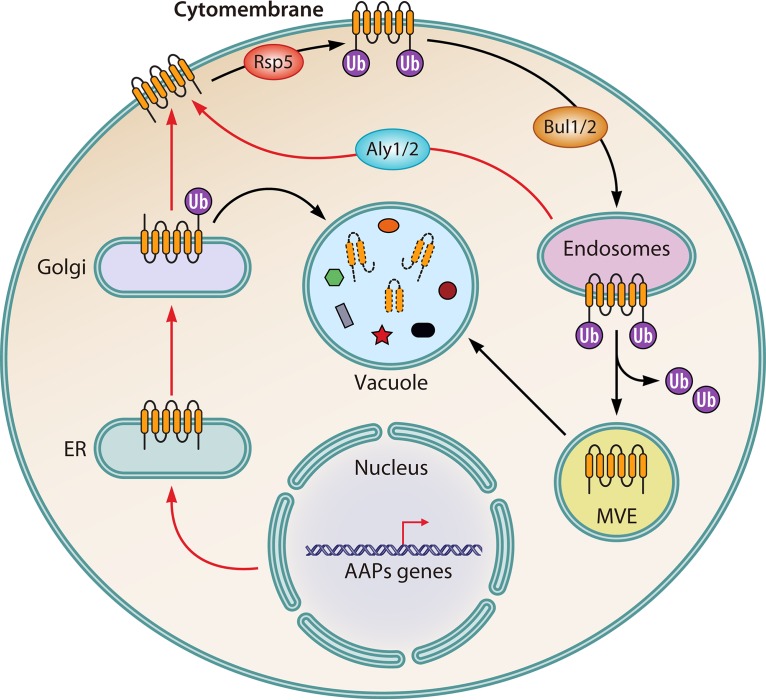FIG 3.
Ubiquitylation regulation of AAPs. Under nitrogen starvation conditions (red arrows), genes encoding amino acid permeases (AAPs) are activated. The AAPs are first translocated into the endoplasmic reticulum for further procession and modification. They then are transported to Golgi apparatus, followed by direction to the plasma membrane, where they fulfill their functions. Under nitrogen repletion conditions (blue arrows), the Golgi apparatus-located AAPs are ubiquitylated by Rap5, which results in their vacuolar translocation and degradation. The plasma membrane-located AAPs are also ubiquitylated by Rap5, which promotes the Bul1/2-mediated endocytosis of AAPs, followed by their transportation to endosomes. When present on multivesicular endosomes, AAPs are finally targeted to the vacuole and degraded. However, there is a recycling pathway when nitrogen is depleted or cells are transferred from nitrogen repletion to starvation conditions. Through the recycling pathway, AAPs that are located on endosomes can be retargeted to the plasma membrane, which is dependent on Aly1/2.

